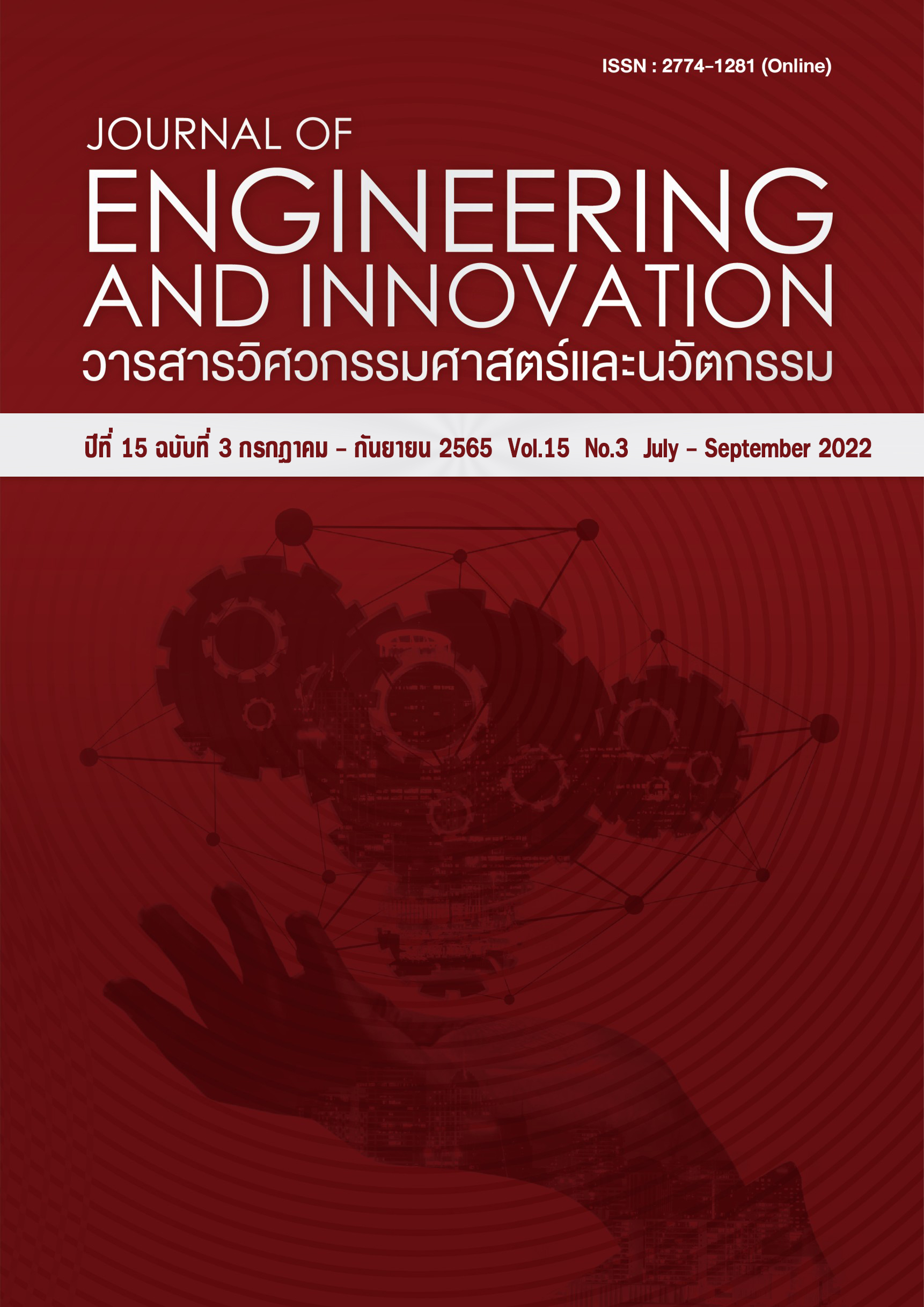Efficiency improvement of ultra broadband transceiver manufacturing process
Main Article Content
Abstract
This case study is to improve an efficiency of ultra-broadband transceivers manufacturing process. The case study found that several customer orders could not be produced on schedules and a lot of work in process. The first part of this study, using Work Study approach to improve in Main Assembly 1, Main Assembly 2 and Main Assembly 3 processes which are mainly done by operators. The improvement, for example removal of unnecessary work, would be applied as a standard work procedure. The result showed that all three assembly processes can reduce time and balance in production cycle of each station similarly. The second part of the study, ultra-broadband transceivers manufacturing process was simulated by a simulation program to find a method for transferring work pieces and to reduce the waiting time. The simulation was done by starting from Traca (RI) process to Climatic Test process. The suitable improvement was the proposed plan 2 (increase one capacity in software testing of Sub System Test process and increase a number of workpieces to be four units in transferring from Warm Up process to Sub System Test process). Findings from simulation models, the efficiency of ultra-broadband transceivers manufacturing process was increased with higher utilization for 5%, lower waiting time for 85.19% and higher productivity for 37.50%.
Article Details
References
ประเสริฐ อัครประถมพงศ์. การลดความสูญเปล่าด้วยหลักการ ECRS. เข้าถึงได้จาก: https://cpico.word
press.com [เข้าถึงเมื่อวันที่ 4 พฤศจิกายน 2563]
รุ่งรัตน์ ภิสัชเพ็ญ. คู่มือการสร้างแบบจำลองด้วยโปรแกรม Arena. กรุงเทพฯ: ซีเอ็ดยูเคชั่น; 2551.
Kelton WD, Sadowski R, Zupick N. Simulation with Arena 6th. New York: McGraw-Hill; 2015.
ณภัทร กีชานนท์, ธิติมา วงศ์พระเวทย์, จุฑา พิชิตลำเค็ญ. การจำลองสถานการณ์การใช้บริการเครื่องฝาก เครื่องปรับสมุด และเครื่องถอนอัตโนมัติ. ใน: การประชุมวิชาการข่ายงานวิศวกรรมอุตสาหการ ประจำปี 2555 เพชรบุรี. 2555. หน้า 93-98.
ธนพันธ์ คงทอง, เพ็ญสุดา พันฤทธิ์ดา, เชฎฐา ชำนาญหล่อ. การสร้างแบบจำลองสถานการณ์เพื่อปรับปรุงประสิทธิภาพการผลิตซาลาเปา. วารสารวิศวกรรมศาสตร์ มหาวิทยาลัยศรีนครินทรวิโรฒ, 2563; 15(2): 71-80.
สุทธิดา เอี่ยมสำอางค์, อธิวัฒน์ บุญมี. การจำลองสถานการณ์เพื่อปรับปรุงกระบวนการทำงานของสายการผลิตสับปะรดบรรจุถุง: กรณีศึกษา. วารสารวิชาการ วิศวกรรมศาสตร์ ม.อบ., 2562; 13(1): 114-126.
ดารัตน์ พุ่มนิคม, บุณยกร กลัวผิด, ประภาพรรณ ศรีเจิดจ้า. การจำลองสถานการณ์เพื่อเพิ่มประสิทธิภาพของระบบจ่ายปูนซีเมนต์. วิศวกรรมศาสตรบัณฑิต:มหาวิทยาลัยศรีนครินทรวิโรฒ. 2553.
สุวัจชัย ครูช่วยอวยพร. การเพิ่มประสิทธิภาพโดยวิธีการจัดสมดุล: กรณีศึกษาสายการผลิตรางเลื่อนเบาะรถยนต์. วิศวกรรมศาสตรมหาบัณฑิต:มหาวิทยาลัยธรรมศาสตร์. 2553.
Aregawi Y. Productivity Improvement through Line Balancing by Using Simulation Modeling Case Study Almeda Garment Factory. Available from: http://www.qjie.ir/ article_667920_b779edf5db51c9d5b67d4c26d693589c.pdf [Accessed 4 th Nov 2020]
Bambang S, Nur A, Pringgo LW. Minimizing Waste Using Lean Manufacturing and ECRS Principle in Indonesian Furniture Industry. Available from: https://doi.org/10.1080/23311916.2019.1567019 [Accessed 5 th Nov 2020]
Champa S. Improvement of Efficiency and Productivity through Machine Balancing in a Sewing Line. Available from: https://www.researchgate.net/publication/332752150_Improvement_of_Efficiency [Accessed 5 th Nov 2020]

